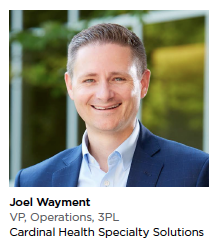 Since the approval of the first CAR-T therapy products in 2017, there has been great excitement around the potential for cell and gene therapies to transform treatment for cancer and other complex diseases. Yet, while optimism is well founded, the journey to make these products available to patients has not been entirely smooth.
Since the approval of the first CAR-T therapy products in 2017, there has been great excitement around the potential for cell and gene therapies to transform treatment for cancer and other complex diseases. Yet, while optimism is well founded, the journey to make these products available to patients has not been entirely smooth.
Despite their eagerness to offer potentially lifesaving treatments, hospitals also have concerns about the financial and reimbursement complexity associated with these high-cost products. In some cases, this results in delayed adoption.
To make these therapies more widely available to patients, pharmaceutical manufacturers need to take steps to simplify the experience and to mitigate the financial risk for providers. Here we outline several key strategies that may help to streamline the process and facilitate faster adoption.
1. Collaborate with Sites of Care to Manage Risk
Alignment between the manufacturer and the sites of care where the therapy is administered is critical to driving adoption of cell and gene therapies — and to successful outcomes for patients.
Sites of care take on significant financial risk by taking ownership of these high-cost therapies and they also have the added challenge of working through a wide range of complicated, and still evolving, reimbursement challenges. In some cases, they may carry costs on their books for months while waiting for payment. These pressures can make many providers hesitant to take on the financial burdens, which may, in turn, slow the uptake of certain cell and gene therapies.
Collaboration is key to overcoming these obstacles. The more manufacturers can partner with providers and sites of care to pinpoint their pain points, then create channel strategies, risk mitigation plans and standard operating procedures that reduce uncertainty and create clarity, the more successful they will be.
2. Create Transparency
The risk associated with reimbursement is a key issue for sites of care.
Hospital administrators need to understand what happens if the patient expires before the medication can be administered or what will happen if the patient’s health condition changes so significantly that he or she can’t receive the medication after it’s been developed in a patient-specific dose.
To help sites of care manage this risk, manufacturers need to clearly communicate their chain-of-custody policies and provide transparency about how reimbursement will be impacted by the myriad of scenarios that could get in the way of the therapy being administered to the patient.
3. Reduce Cash Flow Burdens
Managing cash flow for high value medicines can also be a concern for providers. The reimbursement cycle is longer for these innovative therapies, as payers have multi-step processes that must be completed to assure that the patient meets the clinical criteria, and that less expensive treatment options have already been tried.
The process is also complicated because reimbursement often occurs through Medicaid, which is managed state by state. With the limited number of certified CAR-T facilities, patients may need to cross state lines for treatment, requiring coordination across Medicaid programs, which can result in additional reimbursement delays.
In light of this complexity, manufacturers may want to consider offering hospitals extended payment terms, especially at the time of launch, when providers are most likely to experience uncertainty.
Working with a third-party order-to-cash service provider can also help to streamline the reimbursement process for both manufacturers and sites of care. For manufacturers who may not have a large accounting team, outsourcing order-to-cash to a fully dedicated team focused on invoicing, receivables and chargebacks can help to ensure that reimbursement is expedited.
In addition, manufacturers can mitigate risk by contracting with a third-party logistics (3PL) provider to use a “flash title model" where the 3PL will take ownership of the product and responsibility for collecting the payment for the product from the site of care. This can help reduce the accounts receivable risk for the manufacturer, while also simplifying the ordering process for the hospital.
As more cell and gene therapies are approved, the hospitals that administer these therapies will be managing greater complexity, particularly when it comes to cash flow and reimbursement. Those pharma manufacturers that work collaboratively and provide financial processes that ease cash flow burdens for sites of care will distinguish themselves as preferred partners in an increasingly competitive environment.(PV)
Cardinal Health 3PL Services is a third-party logistics supplier that provides a full range of distribution and order-to-cash solutions.
To learn more about cell and gene therapy solutions, visit www.cardinalhealth.com/cellandgene.
















